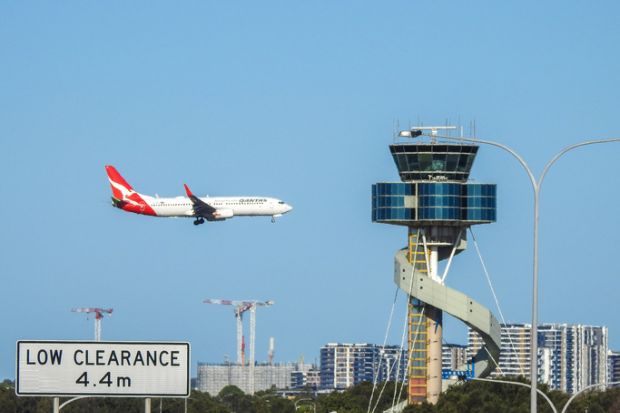The number of international students starting degrees in Australia will fall next year despite “extraordinary” growth in 2023 and signs that demand is getting even stronger, an analyst has predicted.
Economist Keri Ramirez, founder of the Studymove consultancy, said he expected overseas higher education student commencements to recede by about 13 per cent, to 182,000, in 2024.
Mr Ramirez said the rebound in student recruitment since the pandemic had surprised even the most optimistic pundits, with an estimated 208,000 new degree-level students arriving in 2023 – easily eclipsing the pre-pandemic peak of about 177,000 and driving overall higher education enrolments back to 2019 levels.
Degree commencements had risen by about 21 per cent from the top source market of China. They had roughly doubled from India, Indonesia, Sri Lanka and Bangladesh while quadrupling from Pakistan and increasing more than fivefold from Bhutan.
Across all educational sectors, overall student numbers had surpassed the previous monthly record of 611,000 in mid-2023 and reached 646,000 by August. Student visa application figures offered no sign that demand was abating, with around 83,000 lodgements between July and October this year – almost 20,000 more than in the equivalent periods of both 2022 and 2019.
Nevertheless, Mr Ramirez forecasted a slump next year as immigration officials became more choosy about who they allowed into Australia – particularly from the major source markets of India and Nepal. Compared with 2019, success rates for higher education visa applications had already fallen by almost one-quarter from India and over one-third from Nepal, said Mr Ramirez.
“For 2024, we don’t think that we’ll see the levels that we saw in 2023,” Mr Ramirez told a webinar. “There’s going to be a readjustment.”
He said the decline would be felt mainly by universities with significant south Asian enrolments. Those focused on China could expect little impact, because rejection rates for Chinese visa applications were very low.
He stressed that his predictions were based on “current” policies, which could easily change as the government considered recommendations from reviews and inquiries into migration, higher education, skills shortages, support for overseas students and the international education and tourism sectors. “We’re going to be feeling like we’re in a washing machine,” he said.
His remarks came after the Australian Bureau of Statistics revealed that Australian educational exports had notched easily their most successful quarter ever, earning more than A$12.2 billion (£636 million) between July and September.
Universities Australia (UA) said education had flourished despite the “challenging conditions” affecting other key exports. “Education is performing better than major goods exports including coal, coke and other minerals, which have all suffered significant declines.”
It said education earnings had surged by 68 per cent in the 12 months to September against a 4.7 per cent fall in the value of total exports.
In an apparent reference to suggestions that Australia should cap overseas student numbers and tax their fees, UA chief executive Catriona Jackson urged caution.
“Australia has developed a strong, competitive edge in the global battle for international students. Any changes that restrict the movement of these people to our shores need to be weighed carefully against the enormous benefits they bring, during and after their studies.”
Register to continue
Why register?
- Registration is free and only takes a moment
- Once registered, you can read 3 articles a month
- Sign up for our newsletter
Subscribe
Or subscribe for unlimited access to:
- Unlimited access to news, views, insights & reviews
- Digital editions
- Digital access to THE’s university and college rankings analysis
Already registered or a current subscriber? Login








